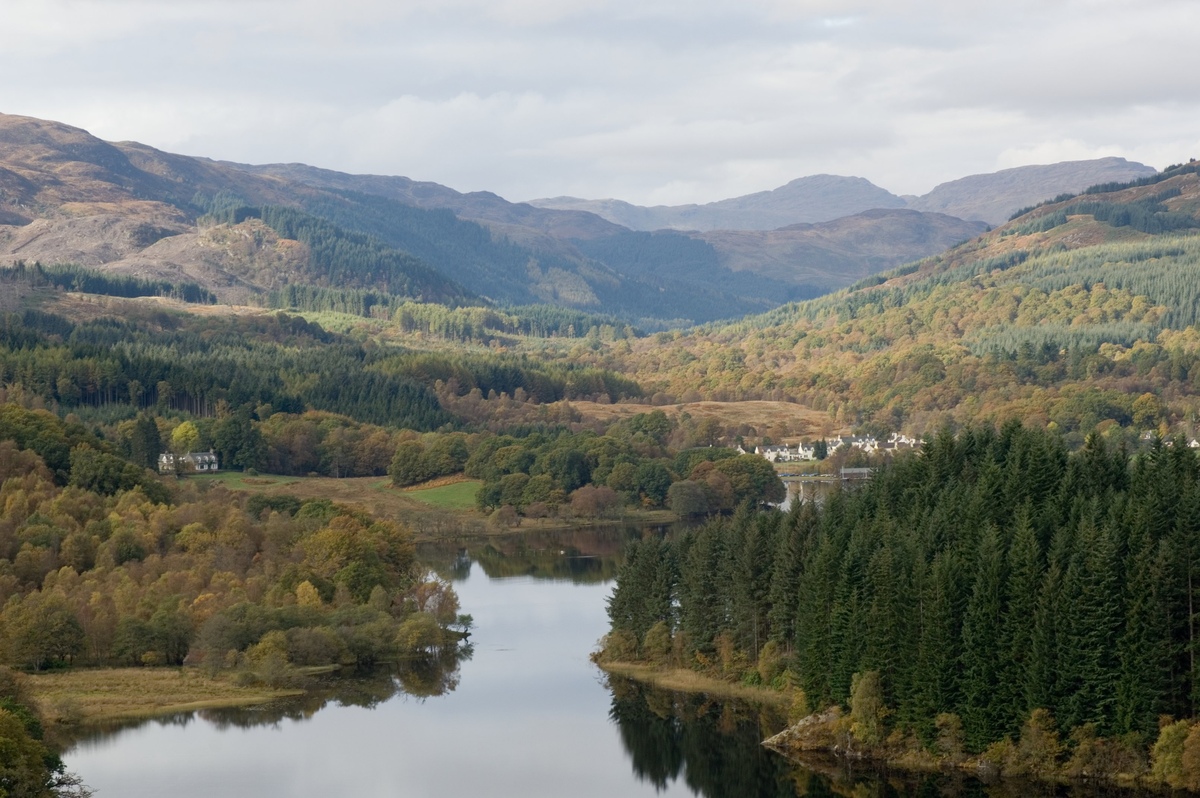The Strathard project: A new approach to community consultation

On the banks of Loch Lomond, a new partnership programme between Forestry and Land Scotland and the local community has been forging a new path in the realms of planning and consultation.
As an area with some of the highest visitor footfall in the country, the communities in Loch Lomond and the surrounding areas are vital to developing sensible approaches to everything from biodiversity and climate change adaptation to tourist development and flood risk management.
This new tactic, known as the 'ecosystems approach' in policy and planning circles, aims to unite all involved organisations and the local residents in a more holistic consultation process, asking for feedback and engagement on what to do with the land and water in the area, how to manage the challenges facing both residents and the environment, and how to plan for the future.
Building better community engagement
The ecosystem approach was chosen in response to previous community engagement projects, many of which saw multiple community consultations on individual plans for things like flood risk, forestry design, river basin management, or the management of tourism in the area. Feedback from local residents showed that multiple consultations were hard to keep track of, and therefore more difficult to engage with. The ecosystems approach attempts to tie all of these threads together, and engage the community in ongoing consultation and joint decision-making.
The introduction of the Community Empowerment Act of 2015 inspired Forestry and Land Scotland to change our relationship with local communities, and improve the way we work with them to deliver a more joined-up approach. With previous projects in Stirling, Aberdeenshire and the Scottish Borders using the ecosystems approach effectively, it was decided that the larger, more long-term Strathard Project would trial this approach on a grander scale.
Understanding local needs
At the heart of the ecosystems approach is a desire to better understand what is important to local communities and visitors to Strathard, and their aspirations for the future. This produces vital information which Forest Research, FLS and our partners can factor into future decisions about water and land management.
The process for the Strathard Project was developed in collaboration with Loch Lomond charity body The Community Partnership. They helped produce a Community Action Plan in 2016, launched at a series of public consultations. The results of these consultations are now being fed into future plans for the area, with key local volunteers participating in the decision-making process.
This work has already improved the lines of communication between agencies, land owners, and the various partners in the project. Already, the process is beginning to bear fruit, in the form of improved flood management solutions, combining a nature-led, conservationist approach with expert local knowledge. The Strathard Project Story Map gives more details of the area covered by the project, and its outputs so far.
What we learned
Apart from gathering vital opinions on the value, uses and possible future plans for Strathard and its surrounding area, the project has also empowered local communities, with their input factoring into decisions about everything from commercial forestry, to conservation projects to restore or protect vital local peatland and wetland habitats.
We were able to capture a wide variety of opinions and suggestions. Most importantly, the project helped us to find out what the community valued about their local landscape, what was most important to them, and where they wanted to see investment and engagement from FLS and our partners as representatives of the Scottish Government.
Strathard - the future
To find out about the Strathard Project, and the plans FLS has for its future, we spoke to John Hair, Planning Manager for the region.
As a public body, how does the ecosystem approach differ from the ways we have balanced the need for investment in, and protection of an area and the needs of its communities in the past?
John Hair: The ecosystem approach is a more holistic approach to assessing the range of benefits that can be delivered by nature, and how these can be better utilised to benefit people. It allows the Forest Planner to consider land and water management decisions taking account of a wider range of outcomes which could be generated by changes to the environment.
Did the community respond well to being given a bigger role?
Through the consultation, the community had expressed a wish to be more involved in the decision-making process and have better communication with local staff, so this exercise showed how we took their views on board and action them. The community could also see at first hand how their other suggestions were incorporated into the forest planning process, or if they weren’t appropriate an explanation was given as to why not.
The community could also see at first hand how their other suggestions were incorporated into the forest planning process."
- John Hair, Planning Manager, FLS
What did we learn, as an organisation, from the process?
We learned how well a group of public agencies could work collaboratively, both with each other as well as the community. We learned that using community “champions” was a very effective way of not only understanding the community’s issues, but also to explain the complexity of forest management to the community.
Now that the consultation phase has concluded, what projects are confirmed to be going ahead, and what would you like to see happen, in terms of next steps, for this community partnership?
We now use this community involvement model for most of our land management plans, where there is interest from the local community, and keep the local community updated as their plan goes through the implementation stages. Some specific projects (such as natural flood management) will be planned, resourced and implemented as part of this wider process, again with the community being informed as things happen.